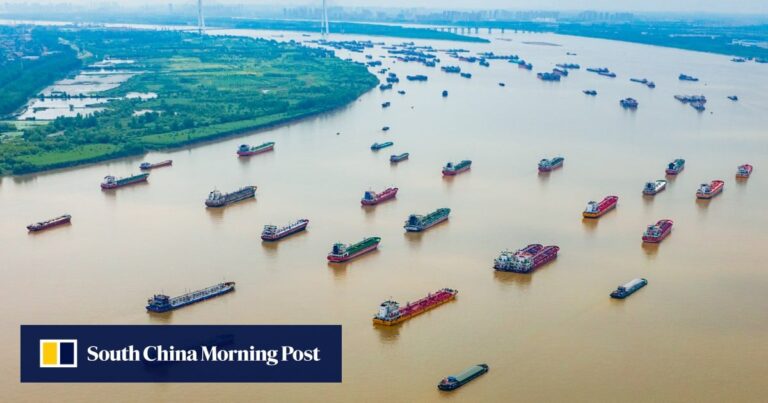Ships passing by the Three Gorges Dam frequently experience traffic jams and navigation on important tributaries such as the Wujiang, Jialing and Minjiang remains hindered. These waterways are poorly connected to the mainstream, news portal The Paper reported, citing experts at the forum.
According to the southwest China branch of the European Union Chamber of Commerce, the average waiting time for cargo ships to pass through the Three Gorges Dam’s locks rose to 12 days last year due to a lack of capacity.
“The significant increase in waiting times is leading to higher transport costs, operational difficulties for shipping companies and increased pollution in the area. It is also having a negative impact on supply chains, with delays in deliveries of goods such as fuel and raw materials, particularly those passing through the locks, disrupting industrial production,” the chapter told the Post.
“Strengthening the transport capacity of the upper Yangtze River basin will be essential to promoting the regional development of Sichuan and Chongqing.”

Procedures for ships to pass through the locks should be simplified, experts at the forum this month said, adding that priority should be given to vessels carrying aviation oil, iron ore, steel, grain and other essential supplies and that the government should help build inland shipping routes.
The continued focus on improving the efficiency of Yangtze river transport ultimately comes down to cost, according to Zhao Jian, director of the Urbanization Research Center at Beijing Jiaotong University.
“This is the cheapest way, especially for large volumes of cargo,” Zhao told the Post. “It will also be beneficial for these cities to develop their ‘port economies’ because ships usually transport cargo through ports.”

The chamber also said the navigability of the Yangtze River route affects the quality of maritime access for the midwestern region and its connection to international trade routes. Measures to improve the efficiency of cargo transportation along the Yangtze River and improve land and water connections will boost efforts to open up midwestern China, it said.
Like the Mississippi River in the United States, the Yangtze is a vast river basin and delta and has long been considered China’s “highway on the waters”, making a major contribution to the country’s economy.
According to official statistics, cargo handling volume at Yangtze River ports last year reached 3.8 billion tonnes, up 8% from 2022, while the number of inter-provincial tourists reached 1.38 million, up more than 26% from 2022.
Zhang Hongbin, an analyst at the Shanghai Institute of International Studies, wrote in a January article in China Review News that shipping on the Yangtze River is growing rapidly because it is much cheaper than rail or air transport.
“The Yangtze River is so efficient that it accounts for 80 percent of China’s ore shipments, 80 percent of its coal and 70 percent of its crude oil,” he said.
But further transport development has been hampered by difficulties on the river, such as the height of some bridges, including near the eastern city of Nanjing. A 24-metre (79-foot)-high bridge was built in the 1950s but is incompatible with today’s larger ships, he said.
Efforts are also underway to repair some of the difficult sections: A government project began in 2017 to dredge major sections of the river from Yichang, Hubei province, through Wuhan to Anqing, Anhui province.
The Hubei Provincial Transport Bureau said at the time that the project would deepen parts of the river by six metres, allowing 13,000-ton ships to access Wuhan and 5,000-ton ships to access Yichang, bringing direct economic benefits while significantly reducing ships’ energy use.


